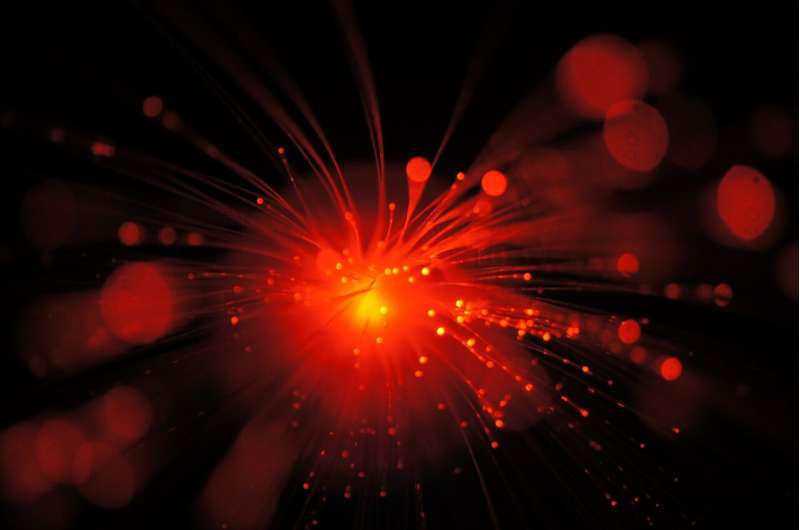High brightness mid-infrared laser expands horizon of spectroscopic analytical technique

Researchers have used an extremely bright mid-infrared laser to perform an analytical technique known as spectroscopic ellipsometry. The new approach captures high-resolution spectral information in less than a second and could offer new insights into quickly changing properties of a variety of samples from plastics to biological materials.
Spectroscopic ellipsometry measures how the polarization of light changes after interacting with a sample. When performed in the infrared portion of the spectrum, this approach can reveal detailed information about a sample's chemical composition and molecular orientation.
In The Optical Society (OSA) journal Optics Letters, researchers from the Research Center for Non Destructive Testing (RECENDT) GmbH and Johannes Kepler Universität, both in Austria, describe how they incorporated a mid-infrared quantum cascade laser (QCL) into a spectroscopic ellipsometry setup. This relatively new type of laser is at least 10,000 times brighter than the traditional light sources used for spectroscopic ellipsometry.
They showed that the QCL greatly improved the signal quality of the spectroscopic measurements and shortened the spectral acquisition time from several hours to less than a second, with further improvements possible as the new laser technology progresses. They also demonstrated that the technique can be used for real-time monitoring of molecular reorientation as a plastic film is stretched.
"Our method provides access to sample properties that couldn't be observed in real-time before," said Markus Brandstetter, head of the research team from RECENDT. "QCL ellipsometry could help improve manufacturing processes and the quality of the resulting product. It might also reveal previously unobservable physical and biological processes that would lead to new scientific discoveries."
A very bright light source
The mid-infrared QCL used by the researchers features a brightness level that exceeds even that of synchrotron sources, which are only available in specialized facilities. The laser's brightness means it can be used for mid-infrared spectroscopic ellipsometry of highly absorbing materials or substances, including those dissolved in water. "Because of the high mid-infrared absorbance of water, this has been very difficult or even unconceivable up to now," said Brandstetter.
The laser's emission wavelengths can be tuned over a broad mid-infrared range that matches perfectly with commercially available mid-infrared detectors. Another advantage is that it can be used for spectroscopic measurements without expensive and complex optical components such as monochromators or interferometers.
"The laser we used also offers the possibility of spot sizes that are restricted only by the diffraction-limit of light," said Jakob Kilgus, a member of the research team from RECENDT. "This can be exploited for ellipsometric measurements with high spatial resolutions, which will be of interest for both science and industry."
Making real-time measurements
To test their new system, the researchers compared it to an instrument considered the gold standard of commercial infrared spectroscopic ellipsometers. They also performed real-time measurements of the re-alignment of molecular chains as a polypropylene film was stretched.
"The new setup outperformed the standard acquisition time and signal-to-noise ratio by orders of magnitude," said Kilgus. "Our measurement of the polypropylene film was only limited by the speed of the stage used to apply the force. Much faster processes could be monitored with the setup."
The researchers point out that these are very promising, but preliminary, results. They plan to develop the instrument further and want to fully exploit the possibility of diffraction limited laser spots to acquire hyperspectral mid-infrared ellipsometry images—which would contain the entire spectrum for each pixel of the image—with reasonable acquisition times.
"We believe there will be a strong interest in this novel technique and the possibility of developing it for commercial use," said Brandstetter. "The sub-second time resolution combined with the high brightness of the laser will be useful for numerous industrial and scientific applications."
More information: Alexander Ebner et al, Sub-second quantum cascade laser based infrared spectroscopic ellipsometry, Optics Letters (2019). DOI: 10.1364/OL.44.003426
Journal information: Optics Letters
Provided by The Optical Society



















